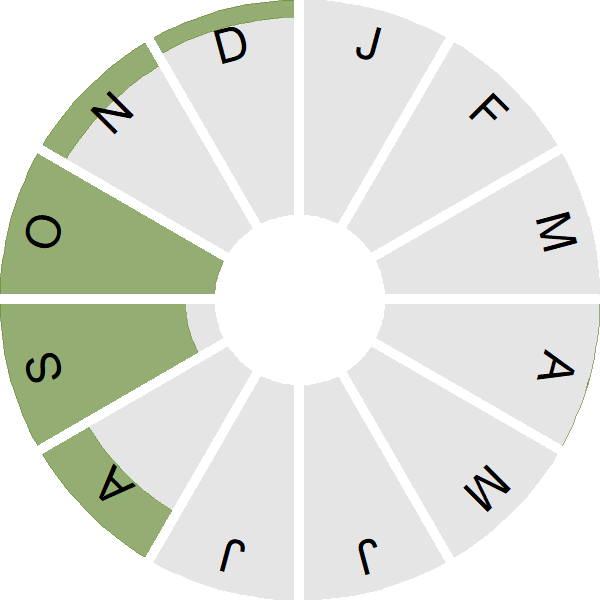Barred Warbler
Introduction
Barred Warbler is a large grey warbler that breeds in open country in eastern Europe and Asia. The species is a regular visitor to eastern Britain in autumn but quite rare in spring.
Key Stats
Status and Trends
Conservation Status
Population Size
Population Change
Barred Warbler is a scarce passage migrant in the UK, seen almost exclusively in the autumn [Parkin & Knox 2010]. There are approximately 1–200 records per year, but no trend is available for this species [White & Kehoe 2024].
Distribution
This species is a rare vagrant and was recorded during Bird Atlas 2007–11 as shown on the map.
Occupied 10-km squares in UK
or view it on Bird Atlas Mapstore.
or view it on Bird Atlas Mapstore.
European Distribution Map
Distribution Change
This vagrant is too rarely reported to map distribution change.
Seasonality
Barred Warbler is a scarce autumn passage migrant, with records mostly from mid August to October, though some late birds have been recorded into December.
Weekly pattern of occurrence
The graph shows when the species is present in the UK, with taller bars indicating a higher likelihood of encountering the species in appropriate regions and habitats.

Movement
Britain & Ireland movement
Foreign locations of birds ringed or recovered in Britain & Ireland
Dots show the foreign destinations of birds ringed in Britain & Ireland, and the origins of birds ringed overseas that were subsequently recaptured, resighted or found dead in Britain & Ireland. Dot colours indicate the time of year that the species was present at the location.
- Winter (Nov-Feb)
- Spring (Mar-Apr)
- Summer (May-Jul)
- Autumn (Aug-Oct)

European movements
EuroBirdPortal uses birdwatcher's records, such as those logged in BirdTrack to map the flows of birds as they arrive and depart Europe. See maps for this species here.
The Eurasian-African Migration Atlas shows movements of individual birds ringed or recovered in Europe. See maps for this species here.
Biology
Productivity and Nesting
Nesting timing
Egg measurements
Clutch Size
Survival and Longevity
Survival is shown as the proportion of birds surviving from one year to the next and is derived from bird ringing data. It can also be used to estimate how long birds typically live.
View number ringed each year in the Online Ringing Report.
lifespan
Survival of adults
Biometrics
Wing length and body weights are from live birds (source).
Wing length
Body weight
Ring Size
Classification, names and codes
Classification and Codes
- Order: Passeriformes
- Family: Sylviidae
- Scientific name: Curruca nisoria
- Authority: Bechstein, 1792
- BTO 2-letter code: RR
- BTO 5-letter code: BARWA
- Euring code number: 12730
Alternate species names
- Catalan: tallarol esparverenc
- Czech: penice vlašská
- Danish: Høgesanger
- Dutch: Sperwergrasmus
- Estonian: vööt-põõsalind
- Finnish: kirjokerttu
- French: Fauvette épervière
- Gaelic: Ceileiriche-srianach
- German: Sperbergrasmücke
- Hungarian: karvalyposzáta
- Icelandic: Hauksöngvari
- Irish: Ceolaire Barrach
- Italian: Bigia padovana
- Latvian: svitrainais kaukis
- Lithuanian: raiboji devynbalse
- Norwegian: Hauksanger
- Polish: jarzebatka
- Portuguese: toutinegra-barrada
- Slovak: penica jarabá
- Slovenian: pisana penica
- Spanish: Curruca gavilana
- Swedish: höksångare
- Welsh: Telor Rhesog

